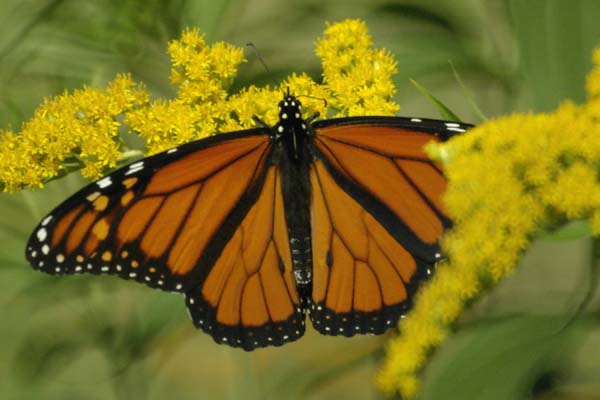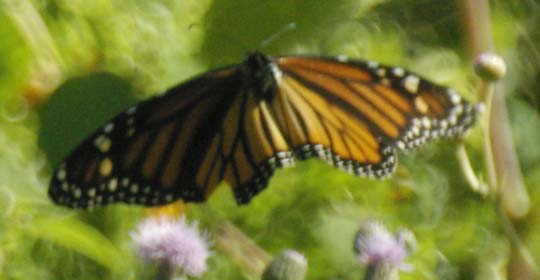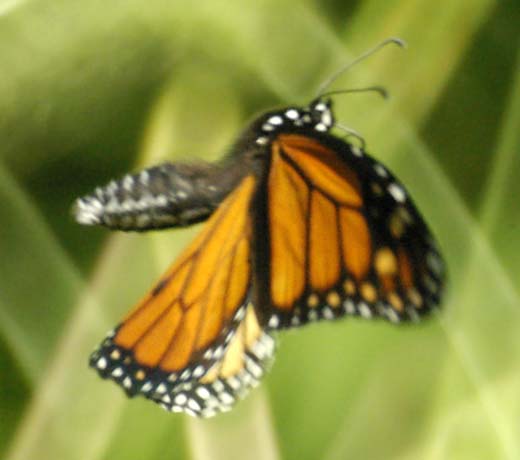| |
Monarchs not only have long migrations but also clearly distinguished sexes; that is, if you know where to look.
The male monarch has a scent patch on the hindwing of either side of its body. You can see it as a slightly larger black spot on one of its black lines. In the photo below, the scent patches can be seen on the two lines closest to and on either side of his body.
|
|
| |
On the following photo of a female monarch, the line (seen along the left hindwing) doesn't show any enlargement. The black lines of the female monarch are somewhat larger than the male's. (But note that the orange and black color is uniform between male and female; on these photos, the colors vary according to available light and time of day.)
|
|
| |
It's always a challenge to try to photograph a butterfly in flight, especially with a manual focus lens. The photo below shows a female (no scent patch) during a wing upbeat, so her body is hidden by her wings.
|
|
| |
The last photo is of a guy monarch in flight (so this page is evenly divided between male and female monarchs). Notice his scent patch?
|
|
| |
The scent patch is seen on the extreme left edge of the hindwing, about two-thirds of the way down from the butterfly's body.
An oddity is that no one has figured out the role, if any, the pheromones (which are produced by the scent gland) play between male and female monarchs.
Photo note: The photos were taken in August and September 2005 with the Pentax *1st D and the reflex SMC 400-600mm lens. Note how the bokeh varies between fine and broken. The problem with the Pentax reflex is a geometric relationship between the distance of subject and background (or foreground). Hit the right spot, and the bokeh works. Getting a butterfly to cooperate is another question.
|



